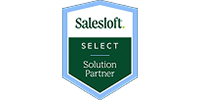Best Practices for Your HubSpot Migration
Undertaking a HubSpot migration isn’t just a technical exercise—it’s a strategic overhaul of how your organization manages customer data, tracks engagement, and drives revenue. HubSpot’s CRM offers powerful tools for marketing, sales, and service teams, but achieving a successful transition requires careful planning and execution. If you’re preparing to migrate CRM systems, don’t let common pitfalls derail your efforts.
By following these best practices, you can ensure a smooth HubSpot migration that maximizes your investment and positions your team for long-term success.
Start with a Comprehensive Audit
The first step to a HubSpot migration is conducting a detailed audit of your current data. According to Experian, 91% of companies believe that poor data quality negatively impacts their business processes, costing businesses an average of 12% of their revenue annually.
You need to know what’s worth migrating and what’s holding you back. Identify incomplete, duplicate, or outdated records and clean your data before the migration begins. Organizations often underestimate how much clutter exists within their CRM systems, and migrating bad data will only cause headaches down the line.
By starting with clean, organized data, you’re setting the stage for a HubSpot migration that delivers meaningful insights instead of confusion.
Define Clear Goals and Objectives
HubSpot’s strength lies in its versatility, but without a clear strategy, even the best tools can become overwhelming. Before you begin, define specific goals for your HubSpot migration. Are you looking to improve lead nurturing, streamline sales operations, or enhance reporting accuracy? Set measurable objectives that guide your migration and allow you to track ROI.
Additionally, create a mapping strategy for fields and data types. HubSpot’s CMS requires a well-thought-out structure, and mapping your existing CRM data to HubSpot’s architecture ensures that key information is preserved and functional.
Involve Key Stakeholders Early
HubSpot migrations affect multiple departments, including sales, marketing, and customer service. Leaving key stakeholders out of the planning process is a recipe for miscommunication and delays. Involve them early and gather input on how they use the CRM. Their feedback will help you prioritize features, customize configurations, and ensure a smoother transition.
💡Pro Tip: Establish a cross-functional migration team with representatives from all affected departments. This team should collaborate on timelines, test data imports, and provide ongoing feedback during the migration.
Data Segmentation and Customization
When you migrate CRM data to HubSpot, customization is key. Don’t treat this as a one-to-one data dump—take the opportunity to segment your data properly and customize your HubSpot environment. HubSpot’s customizable fields, pipelines, and workflows allow you to tailor your system to fit your business needs. This is especially crucial for companies that have outgrown rigid CRM platforms and need flexible automation and reporting capabilities.
💡Pro Tip: Customize contact properties, deal stages, and email sequences during migration to reflect your updated processes. Consider HubSpot’s reporting tools to visualize your data and generate actionable insights.
|
Read more: Transforming Finairo’s CRM: A FullFunnel Data Enrichment Success Story |
Test, Test, and Test Again
A HubSpot migration without rigorous testing is asking for trouble and often costs businesses thousands of dollars. Conduct test migrations with sample data before moving everything at once. This allows you to identify errors in mapping, formatting issues, and missing data early on. Testing also ensures that your integrations with marketing tools, third-party apps, and internal systems work as expected.
Ensure Team Training and Adoption
Even the best CRM system is useless if your team doesn’t know how to use it effectively. Training is critical for adoption, especially if your teams are transitioning from a different CRM platform. HubSpot’s intuitive interface makes it easier than most systems, but comprehensive training will help your team take full advantage of advanced features like automation, lead scoring, and reporting.
💡Pro Tip: Provide hands-on training tailored to different roles within your organization. Sales reps need to focus on pipeline management, while marketers should prioritize lead nurturing and campaign tracking.
Leverage HubSpot’s Native Integration Capabilities
HubSpot’s ecosystem offers native integrations with tools like Salesforce, Slack, and Gmail, making it easier to connect with your existing tech stack. When you migrate CRM data, take the time to review these integrations and ensure they’re properly configured to support your workflows.
Additionally, leverage HubSpot’s APIs if you require custom integrations. This flexibility allows you to sync data seamlessly and maintain a unified system without data silos.
Post-Migration Optimization and Ongoing Maintenance
Your migration doesn’t end once the data transfer is complete. Post-migration optimization is essential to fine-tune your CRM settings and workflows. Continuously monitor data integrity, review automation rules, and update contact properties as needed. HubSpot’s reporting tools make it easy to track performance and identify areas for improvement.
Make Your Migration Count with FullFunnel
Migrating your CRM to HubSpot isn’t just about moving data—it’s an opportunity to transform your business processes and unlock greater efficiency. With proper planning, stakeholder involvement, and ongoing optimization, you can avoid common pitfalls and achieve a HubSpot migration that drives measurable results. Follow these tips for migrating to HubSpot CMS, and ensure that your new CRM works as a catalyst for growth, not just a database.
Need a hand with your HubSpot migration?









